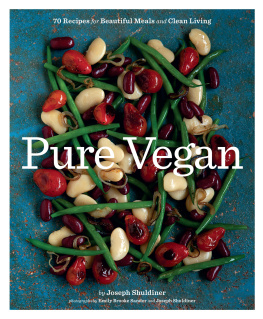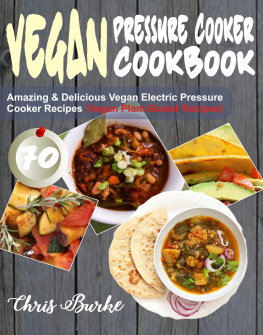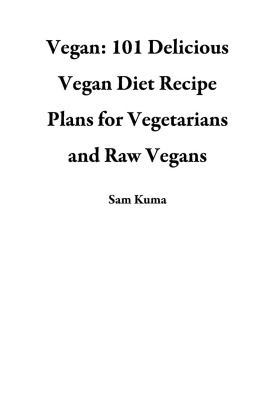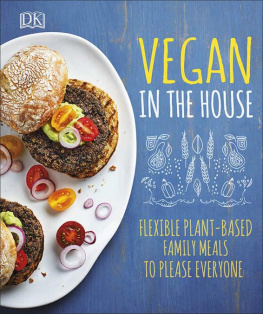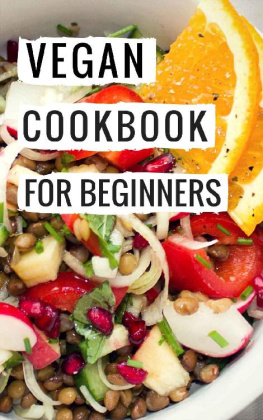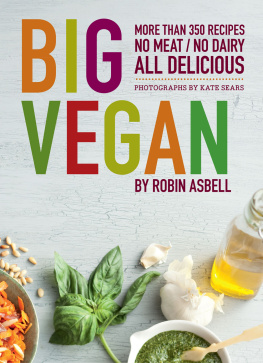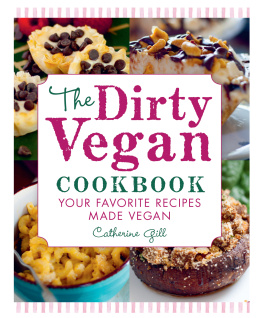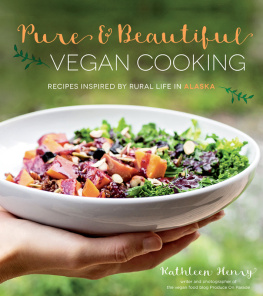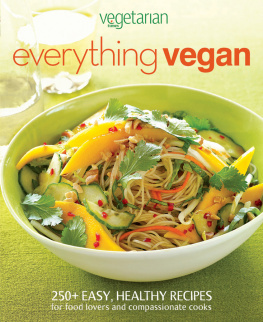
Acknowledgments
Not a single page of this book would have been possible without the help, guidance, and support of so many people, and every page bears their imprint. The most significant imprint belongs to my partner and muse, Bruce Schwartz, and it permeates every aspect of this book, which he believed in even before I did. His abundant love and encouragement helped me to enjoy the successes and get me through the mishaps and bad ideas that got tossed out. His keen intuition and judgment became my litmus test whenever I needed a personal arbitrator of style, tone, or simply a kitsch-alert. I would also be remiss if I didnt mention the never-ending sink of dishes he constantly cleaned; only teasing that he wanted me to give him honorable mention for it.
Many events led me to writing this cookbook and one of the most influential was having met Susan Campoy. Sue was the owner of Julienne, the famed restaurant in San Marino, a burb of Los Angeles. We worked together closely for two years to produce her Cooking with Julienne book. Sue showed me how to be fearless and not stop at anything to get things just right.
Early on, when this book was just an unpolished idea, Kirsten Muenster and Joseph Ternes heaped on the encouragement and excitement I needed to propose this to Chronicle, and that is the best kind of support one could receive from friends.
While on the subject of Chronicle Books, you wouldnt be reading this if editorial director Bill LeBlond hadnt believed in me and guided this project to fruition. From there, my patient editor Sarah Billingsley cheerfully sifted my prose. Our easy back and forth was one of the great pleasures of writing this book.
I also owe a big thank you to my creative crew, lovingly referred to as Team Vegan. First, Emily Sandor, who originally introduced me to Sue Campoy and who also inspired me to begin photographing food myself. She has been a great teacher and photo partner. The rest of my styling team was equally fantastic: Basil Friedman (food) and Dani Fisher (props) are the food equivalent of a celebritys posse. They made all the dishes camera-ready for their close-ups and were a joy to work with. Assisting all our efforts were David Kiang, photo and digital technician; John Galanga, food styling; and Bella Foster, prop styling.
Early on when I was envisioning the recipes, I turned to Christine Moore, owner of Little Flower Candy Co. and her pastry chef Harriet Han Hayes for guidance with vegan baking. They graciously welcomed me into the cafs kitchen to help me veganize a few of my ideas. The Pistachio Olive Oil Cake and Chocolate-Tahini Timbales were products of our late nights together. I consider Little Flower my satellite office and have held countless business meetings there when my kitchen was too full of dishes. (And thank you Christine, Harriet, and Robert for your 80-proof coffee!)
Creative vegan breakfast recipes are challenging in my opinion, but with the help of Chef Nick Coes Kutya recipe, my mornings are much more exciting. When I heard that this Eastern European dish was being served at his Black Cat Bakery in Los Angeles, I asked Nick for the recipe, which he graciously shared.
Once the recipes were written, I depended on the feedback from an amazing group of home recipe testers. These home cooks were an amalgamation of friends, friends of friends, and a few Facebook acquaintances. Thank you James Aarons, Bob Brady and Kent Kirkpatrick, Cynthia Campoy-Brophy, Jennie Cook, Reed Davis, Merion Estes, Ashley Gish, Megan Hobza and the Veganistas collective, Courtney Hopkins, Gary Jackemuk, Karen Klemens, Erik Knudsen and Kelly Coyne, Tawnia Litwin, Stephen Rudicel and Gloria Putnam, Anne Schick, Heidi Spiegal, Nancy Sutor, Judith Teitelman and Aaron Paley, and Michele Zack. Many of the testers reside in different cities and our relationships were strictly via email and photos. My high school friend Heidi even tested recipes from Thionville, France, regaling me with stories of how she had to hunt down many of the ingredients. My best buddies Bob and Kent went as far as to shoot a video of their dinner party in New Mexico comprised exclusively of Pure Vegan recipes they were testing (show offs). Many of the testers were vegans, and many were not. Regardless, the most frequent response from their experience was I served this to guests and they had no idea it was vegan. That was the best feedback I could have heard.
Ingredient sourcing was one of the important components in creating the recipes and I want to thank a few of the distributors and producers for supplying ingredients during the many days of recipe development and photo shoots: Melissas Produce, Earth Balance, Chado Teas, and GreenBar Collective.
Many of the photographs in this book would not have been possible without the warm generosity of Gloria Putnam and Stephen Rudicel for allowing us into their home, and historical monument, the Zane Grey Estate; Greta Dunlap, the South Pasadena Farmers Market manager for letting us run rampant through the market aiming our lens anywhere we wanted; the Vartan family and their spice-filled Middle Eastern emporium, Vartans Family Groceries; and also the fecundity of rare and hard to find mushrooms on display at Dirk Hermans LA FungHi weekly market booth. (Mushrooms are the vegans caviar!)
I also want to thank Blake Little for my authors portrait, Leslie Aiken for her emergency manuscript doctoring, and all of you who have been following the progress of Pure Vegan as it was being created.
My hope is that this is only the beginning and that everyone who helped with this book will come along for the next adventure. Please accept my heartfelt gratitude, one and all.


Are you relaxed and sitting down? If not, turn to the recipe for and prepare yourself a batch. When you get back, we should have a little chat.
First, let me tell you what this book is not. Pure Vegan is not about politics or any kind of spiritual doctrine. My intentions in writing this book are not to debate the virtues of one belief system over another, nor to promote the health benefits of eating a plant-based diet. Aside from having little interest in these debates, Im not qualified to take up a pair of boxing gloves in their defense.
Making my own day-to-day choices about what to eat and what not to eat is complicated enough without trying to tell you what you should and shouldnt eat. And that, my friend, is what this book is about: making choices that feel natural and right to you; to sow a few seeds in the back of your mind and help you cultivate your own plant-based culinary repertoire. No matter what dietary philosophy you follow, my hope is that reading and cooking from this compendium of recipes will inspire you to look at how you eat in a new way, sharpen your sense of relationship to the ingredients you encounter, and, above all, always demand more from the food you eatmore variety, more flavor, more intensity.
OPEN ALL NIGHT
In organizing the recipes in this book, I knew from the start that dividing dishes into the usual categoriesappetizers, soups, salads, main courses, and so onwould bore me to death. I dont know about you, but I eat constantly, from morning to night. In fact, Ive been ridiculed more than once for discussing tomorrows breakfast as I prepare for bed.
That got me thinking about my preoccupation with eating and about what an important role food plays throughout my entire day, and this led me to organize the chapters by time of day rather than by type of dish. I made sure to include some late-night (and very late-night) recipes for you night owls out there who still crave a little something in the wee hours.
Next page
